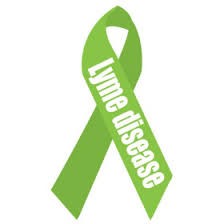May is Lyme Disease awareness month!
 What is Lyme Disease and how can you protect yourself?
What is Lyme Disease and how can you protect yourself?
Lyme disease is the most common tick borne infection spread to humans in the United States. It is caused by the bacterium Borrelia burgdorferi and transmitted through the bite of infected blacklegged tick. In the United States, most infections occur in the following endemic areas: Northeast and mid-Atlantic (from northeastern Virginia to Maine), North central states (mostly in Wisconsin and Minnesota), West Coast (particularly northern California).
Each year, approximately 30,000 cases of Lyme disease are reported to CDC by state health departments and the District of Columbia. However, this number does not reflect every case of Lyme disease that is diagnosed in the United States every year. Estimates using other methods give much higher numbers. They suggest that approximately 476,000 people may get Lyme disease each year in the United States.
Early Symptoms of Lyme Disease
Typical early symptoms include fever, headache, fatigue, and a characteristic skin rash called erythema migrans (a circular rash that may appear similar to a bulls eye pattern). If left untreated, the infection may spread to joints, the nervous system, or heart. Lyme disease is diagnosed based on symptoms, physical findings, the possibility of exposure to infected ticks, and laboratory testing. Most cases of Lyme disease can be treated successfully with a few weeks of antibiotics. Keep in mind ticks that transmit Lyme disease can occasionally transmit other tickborne diseases as well.
Lyme Disease Prevention
As we enter Spring, please enjoy the great outdoors! There are some practical steps you can take to prevent Lyme disease such as: Using insect repellent, performing tick checks, removing ticks promptly, and avoiding tick habitats.
- Generally, a tick must be attached for 36 to 48 hours or more before Lyme disease can be transmitted. By performing routine tick checks you can remove a tick quickly (within 24 hours), and greatly reduce your chances of getting Lyme disease. Unfortunately, during the nymph stage, ticks are about the size of poppy seed which makes them very difficult to spot. You can protect yourself by wearing long sleeves and pants, as well as spraying your clothing with insect repellant. After you come inside take a shower, perform a tick check, and throw your clothing in the laundry or dryer on high for 10 minutes to kill any ticks on dry clothing.
- Ticks tend to live in grassy, brushy, wooded areas. Spending time outside walking your dog, camping, gardening, or hunting could bring you in close contact with ticks. Many people get ticks in their own yard or neighborhood even in suburban areas.
- Use an EPA approved product containing DEET, picaridin, IR3535, Oil of Lemon Eucalyptus (OLE), para-menthane-diol (PMD), or 2-undecanone. EPA’s helpful search tool can help you find the product that best suits your needs. Always follow product instructions. Do not use products containing OLE or PMD on children under 3 years old.

